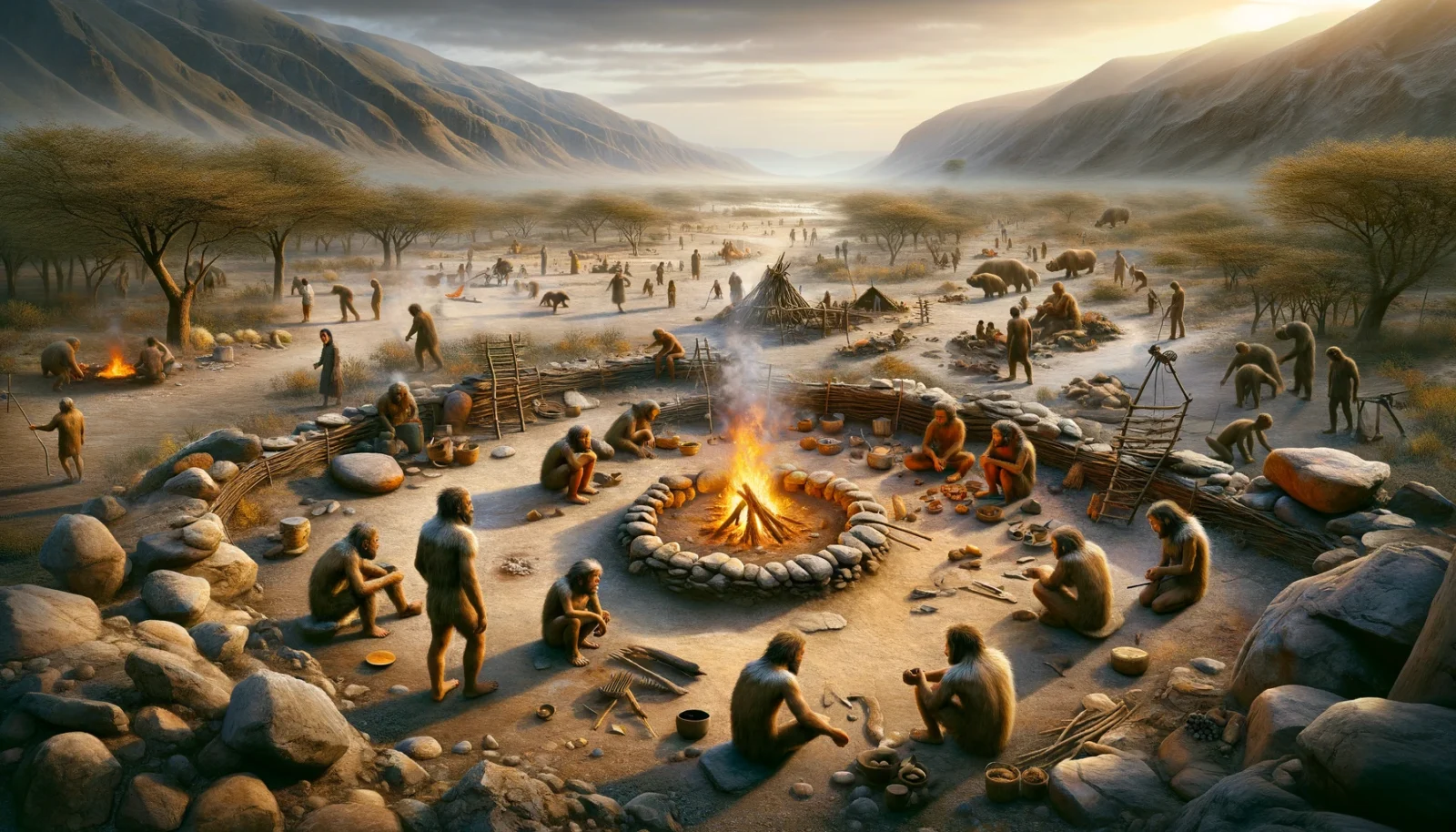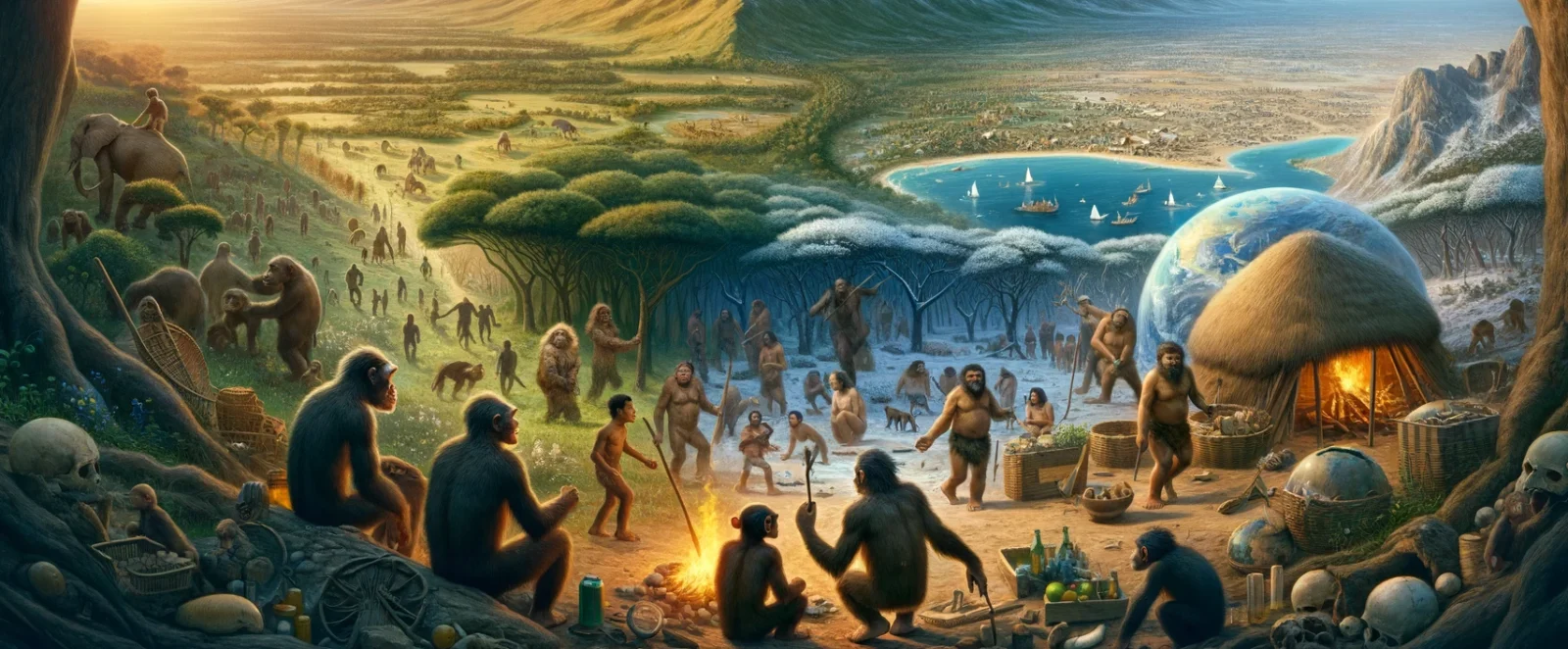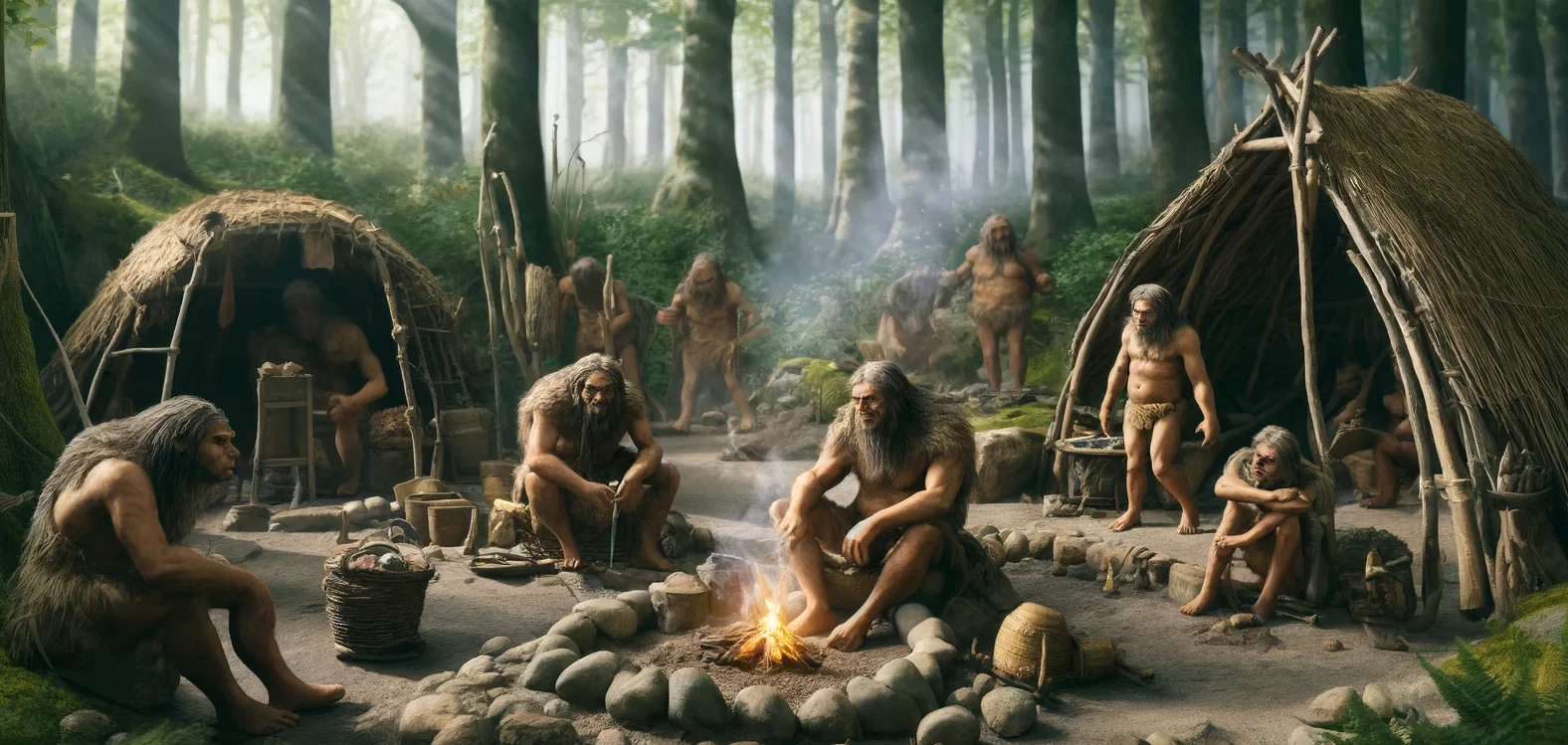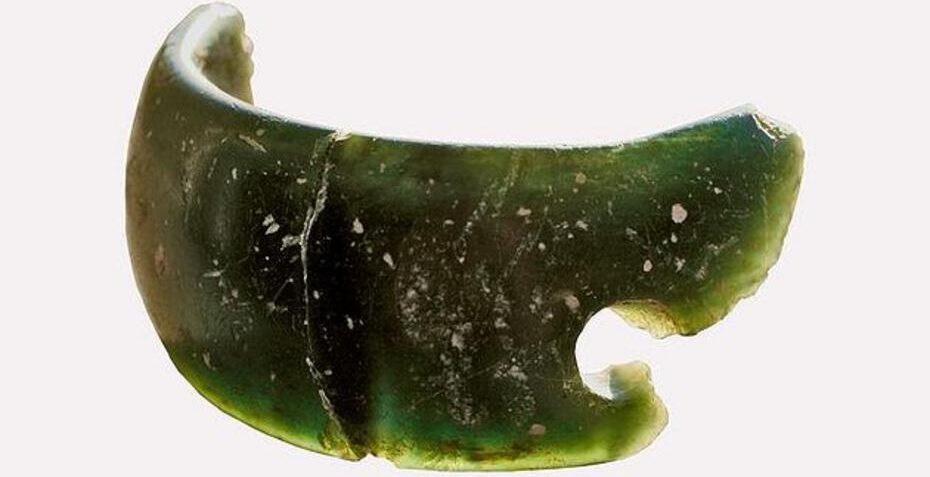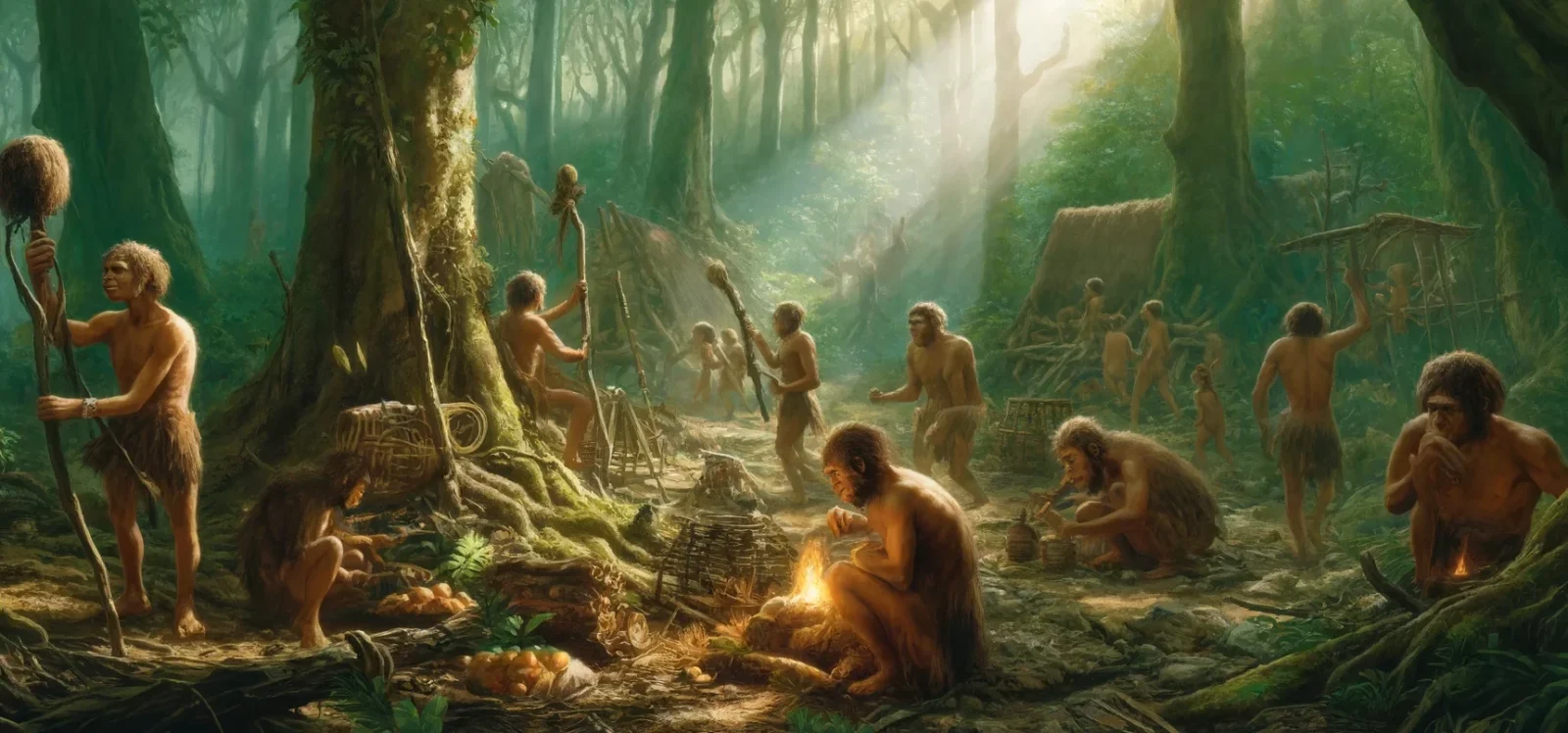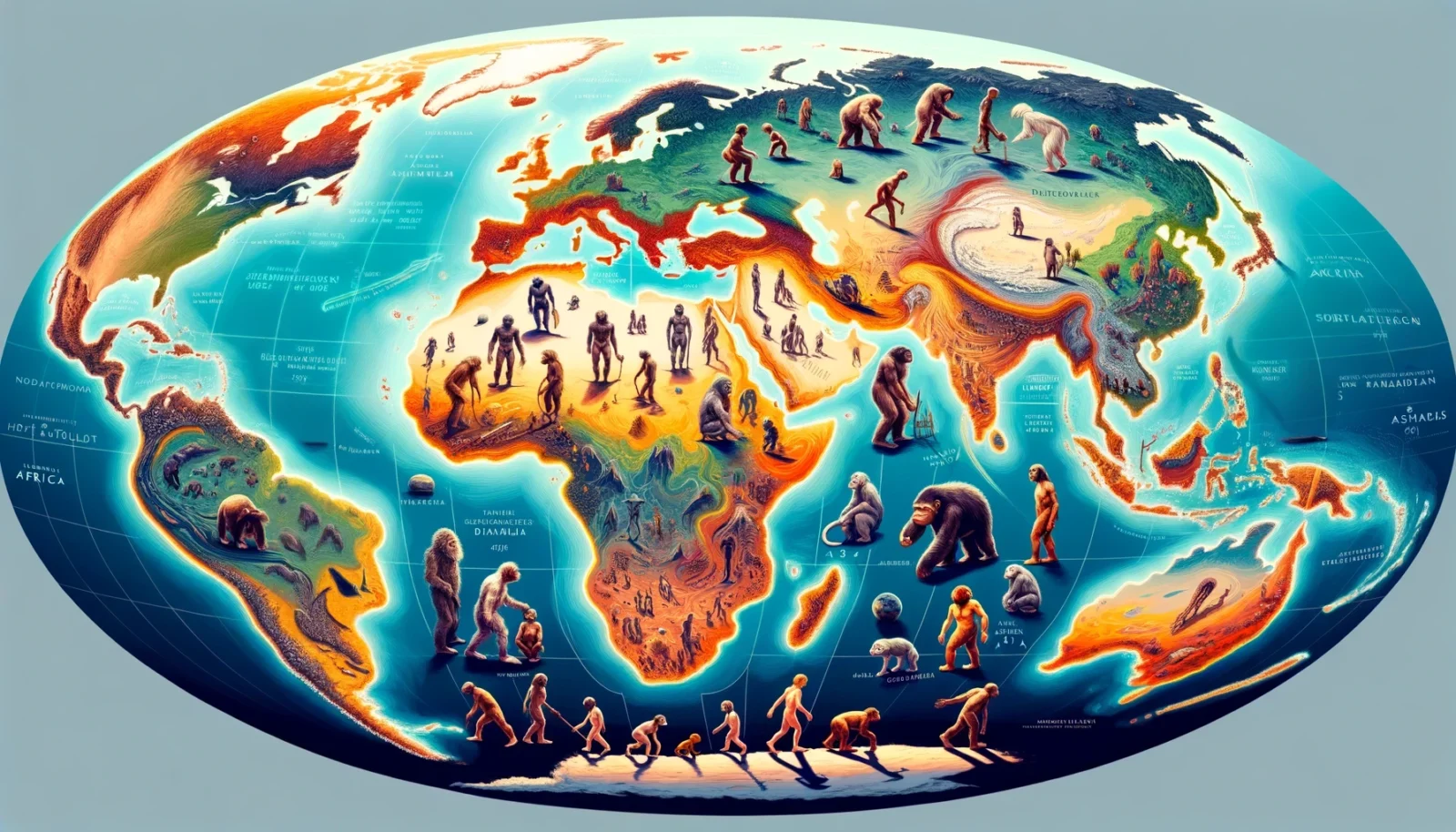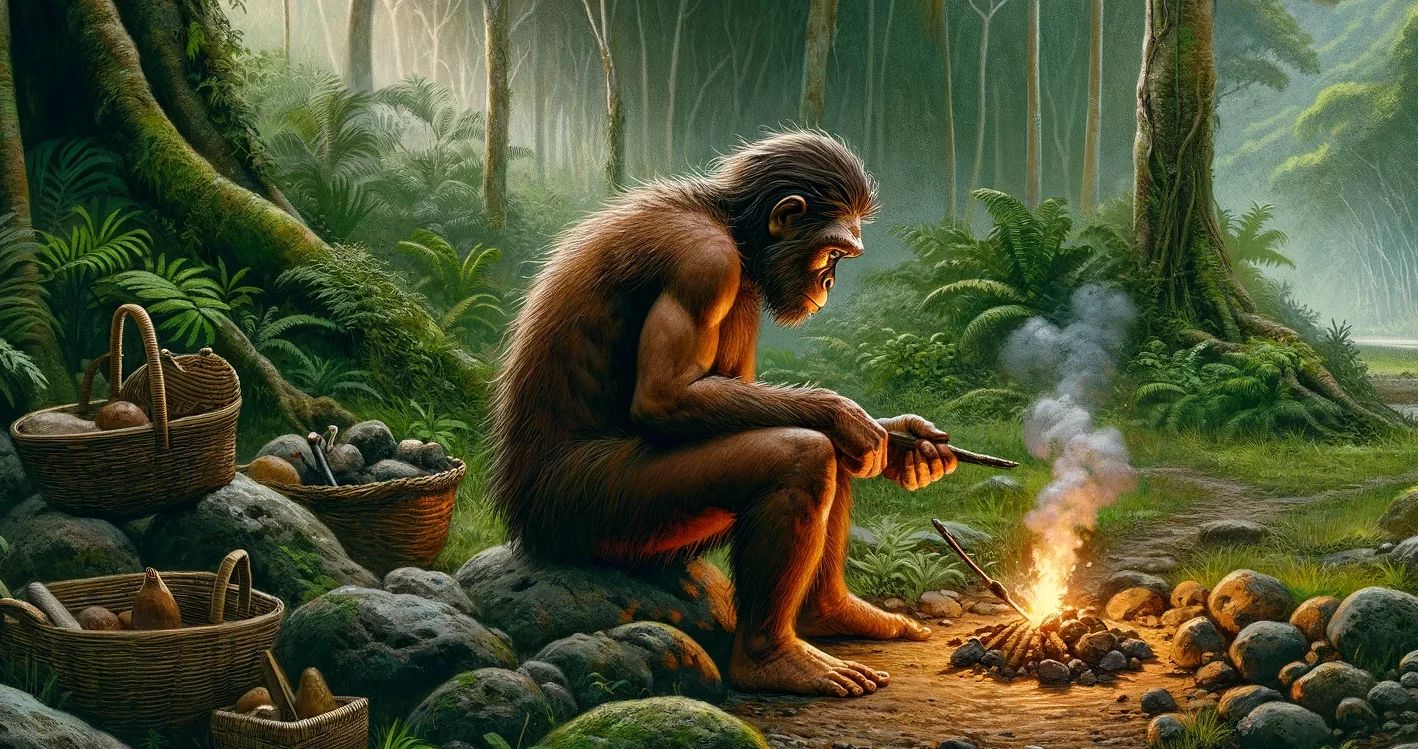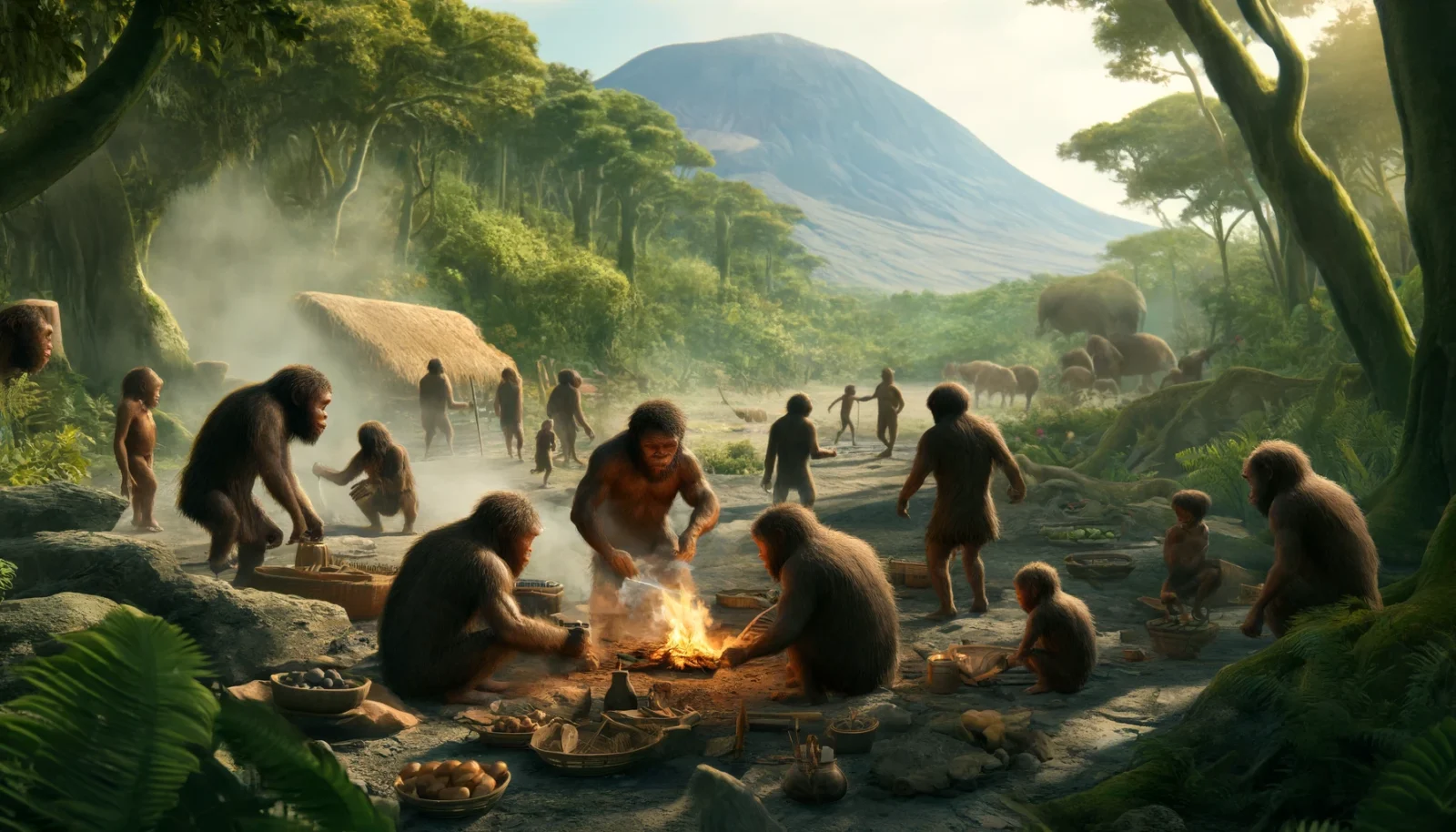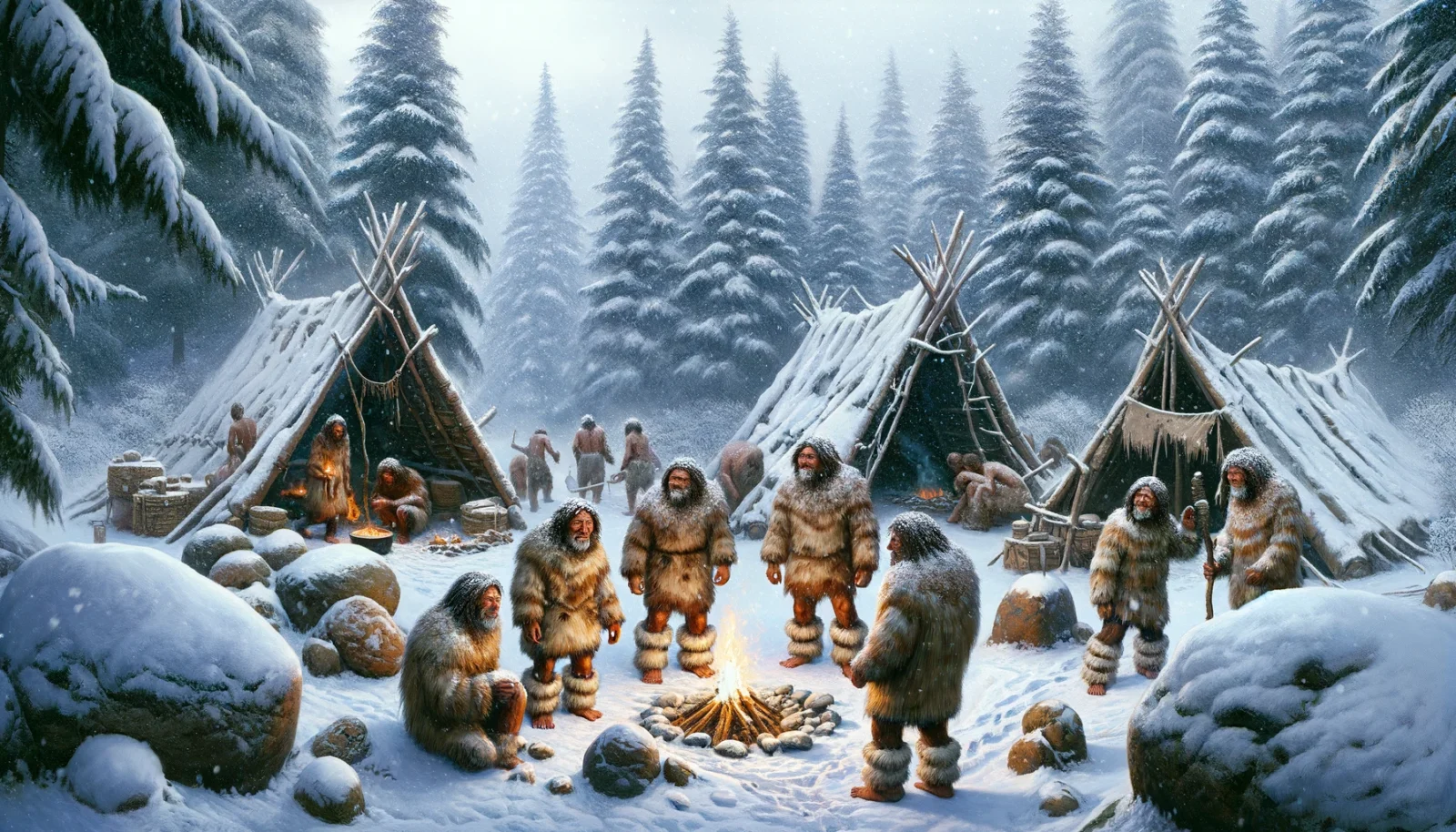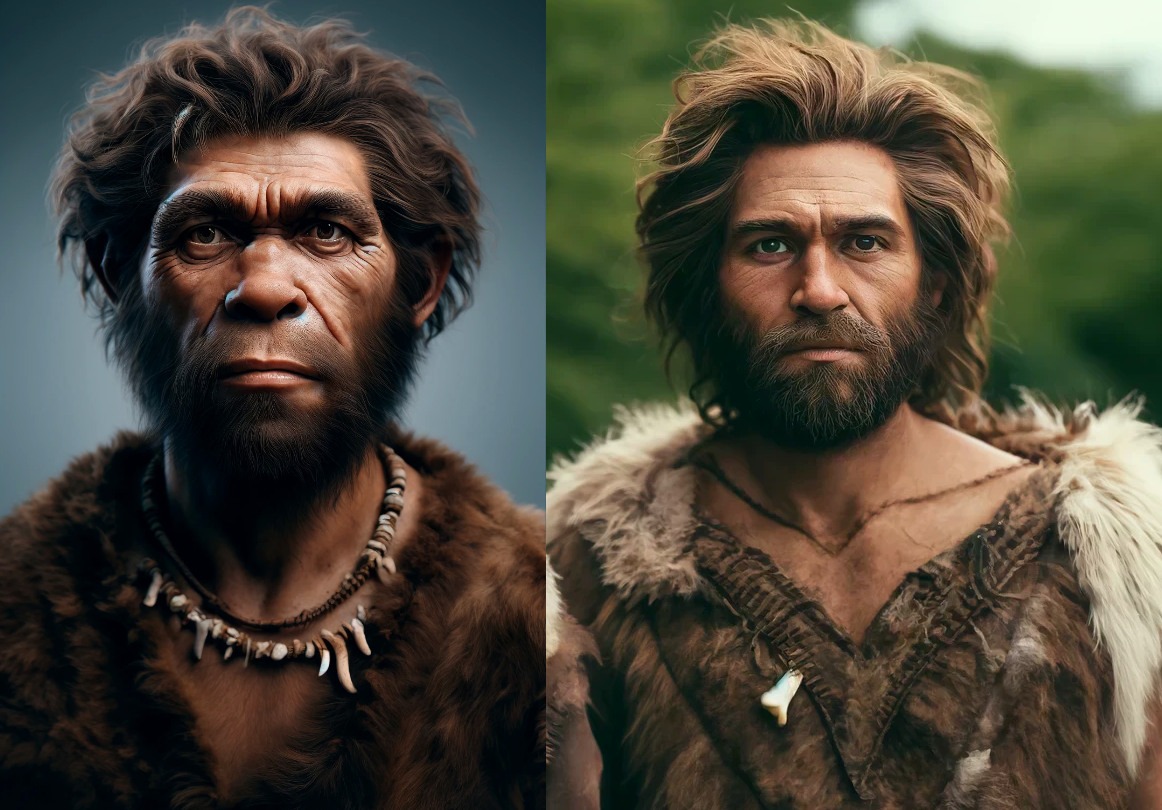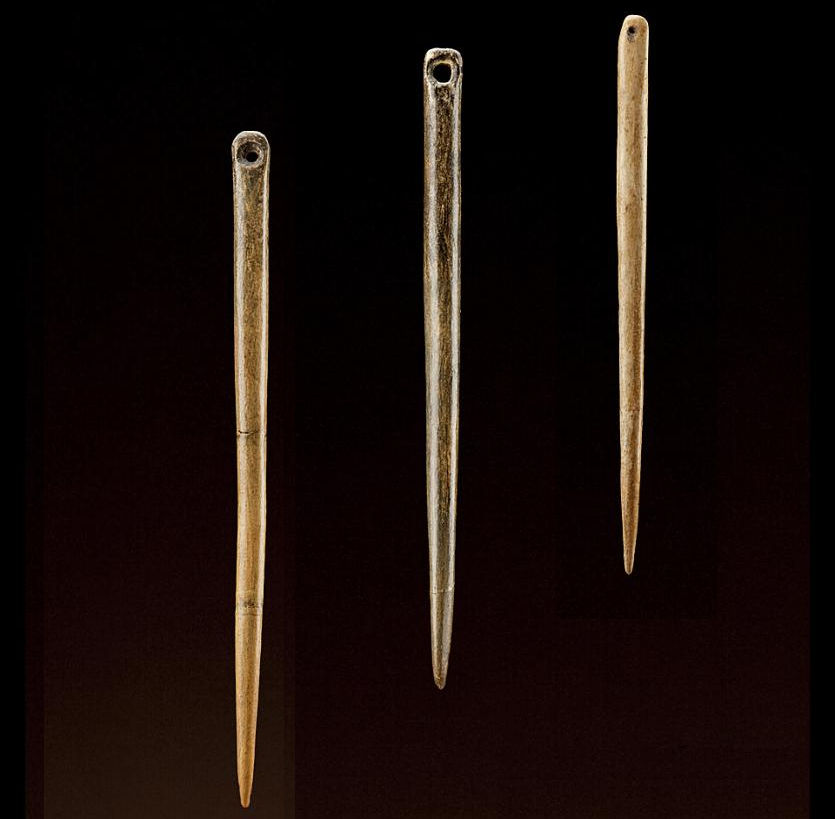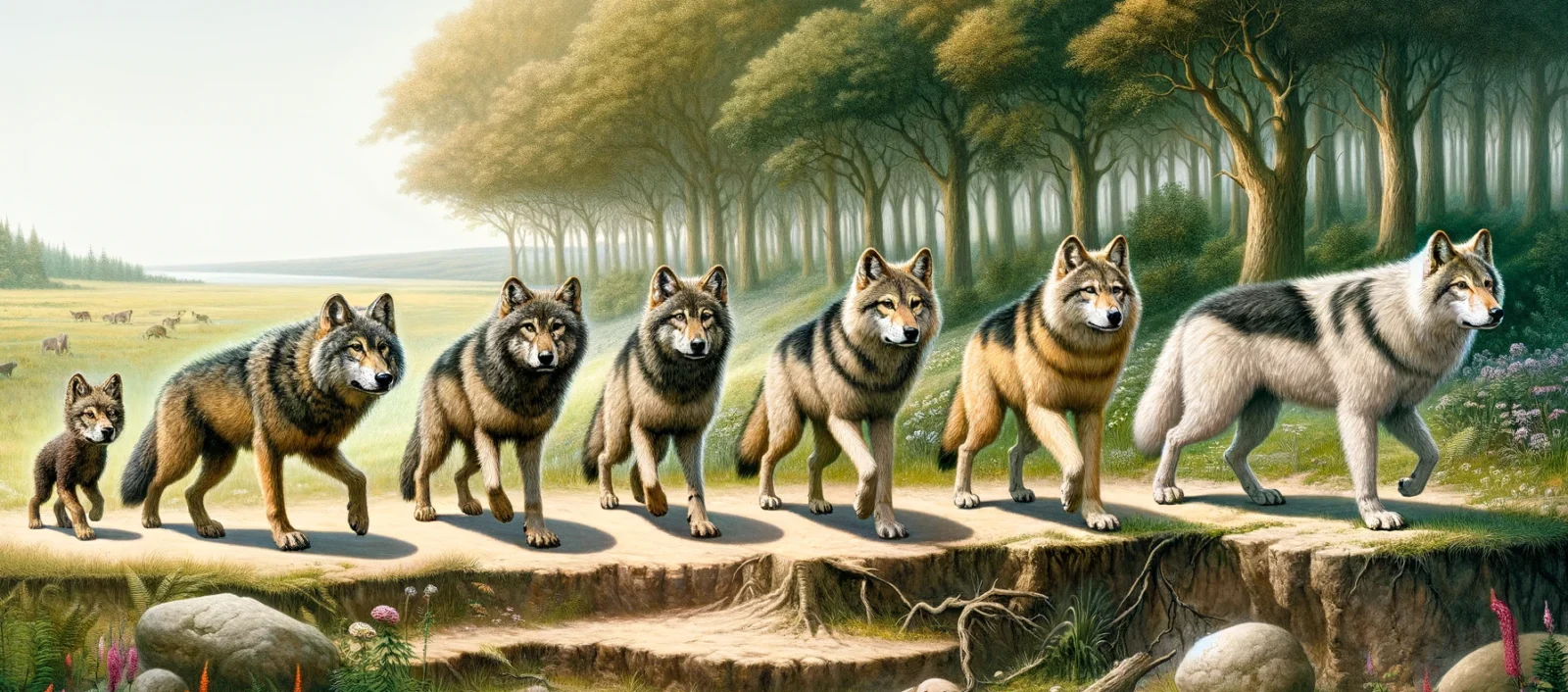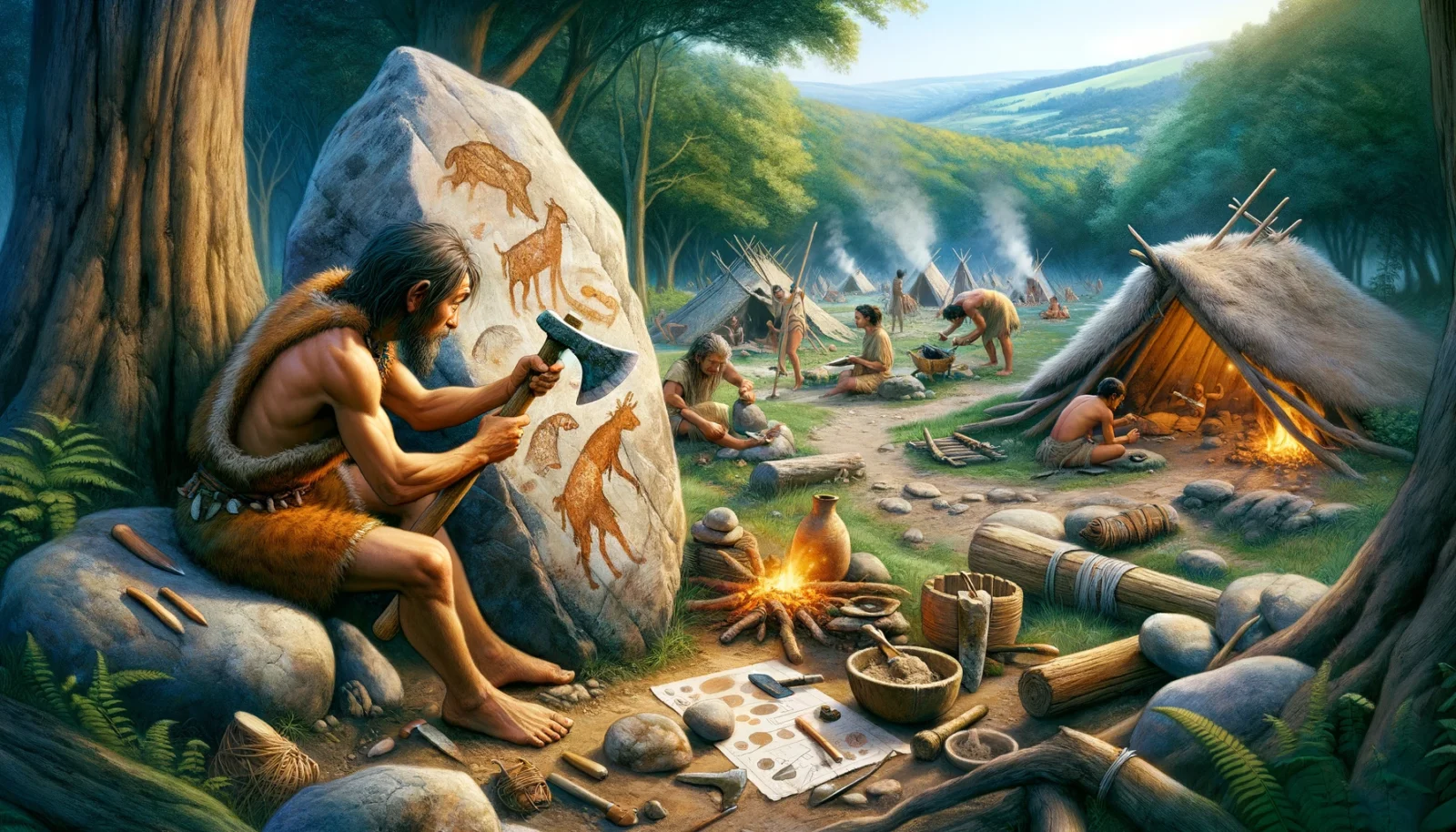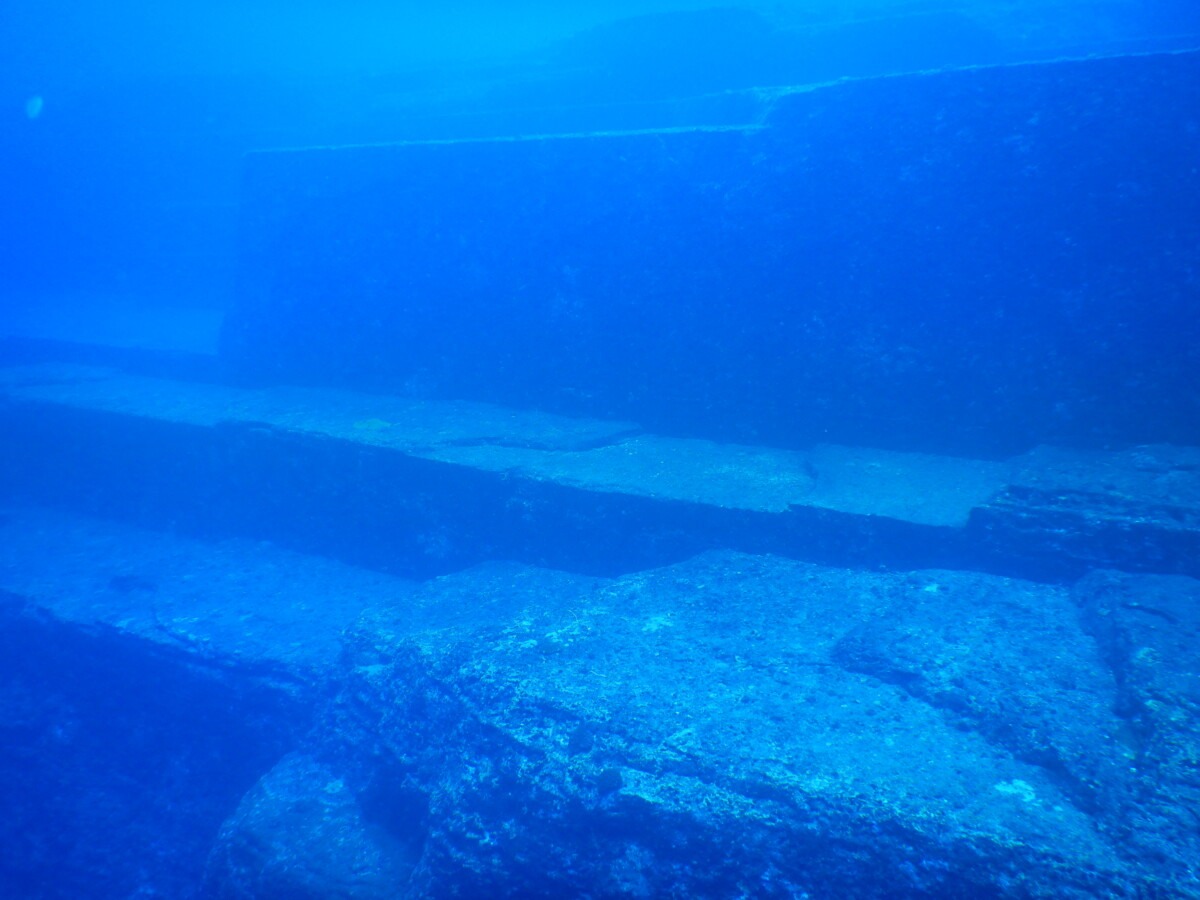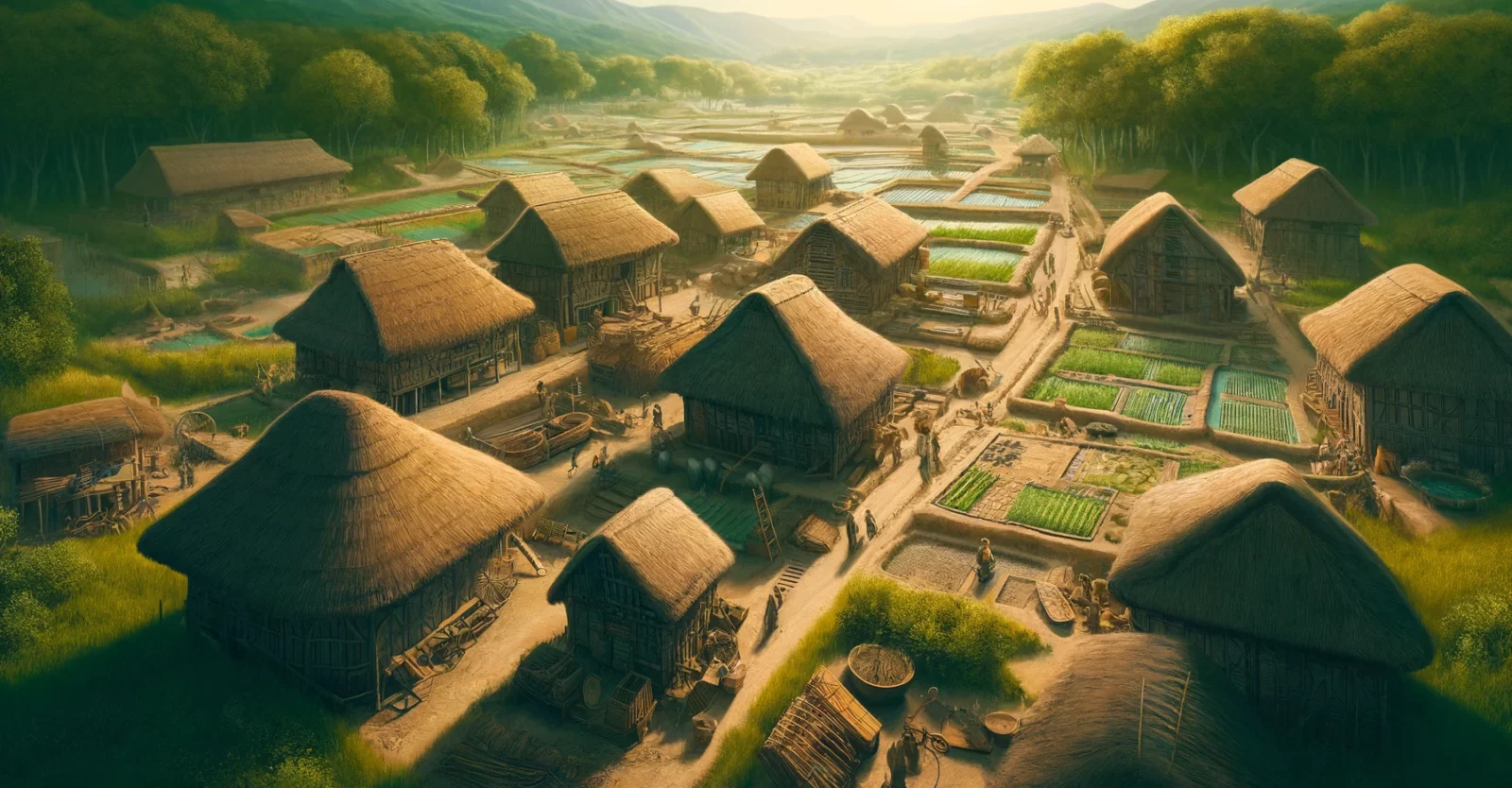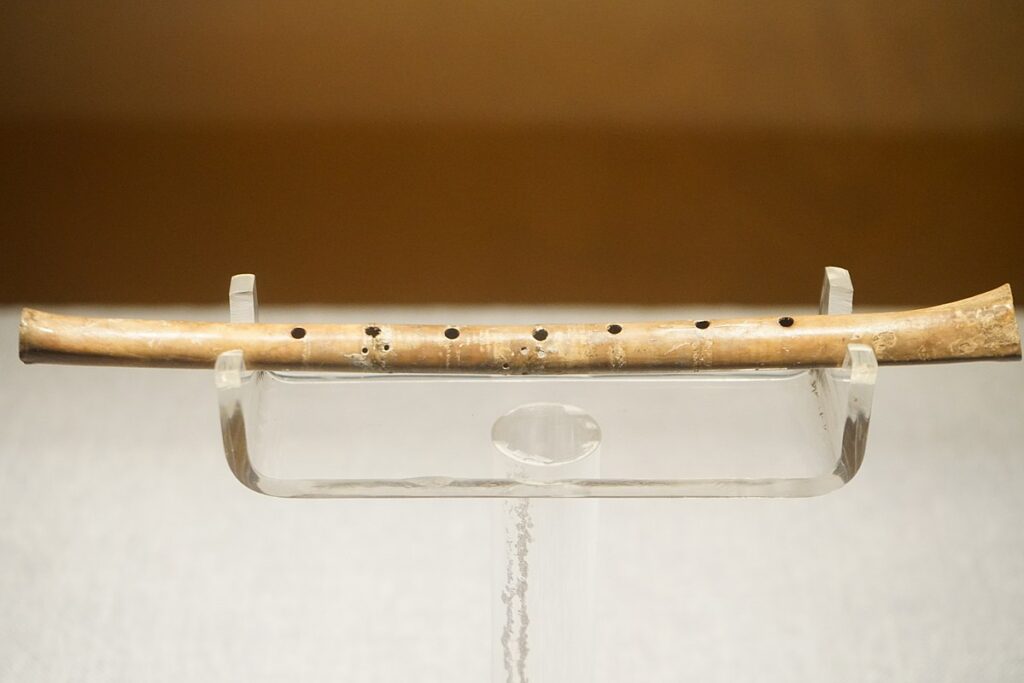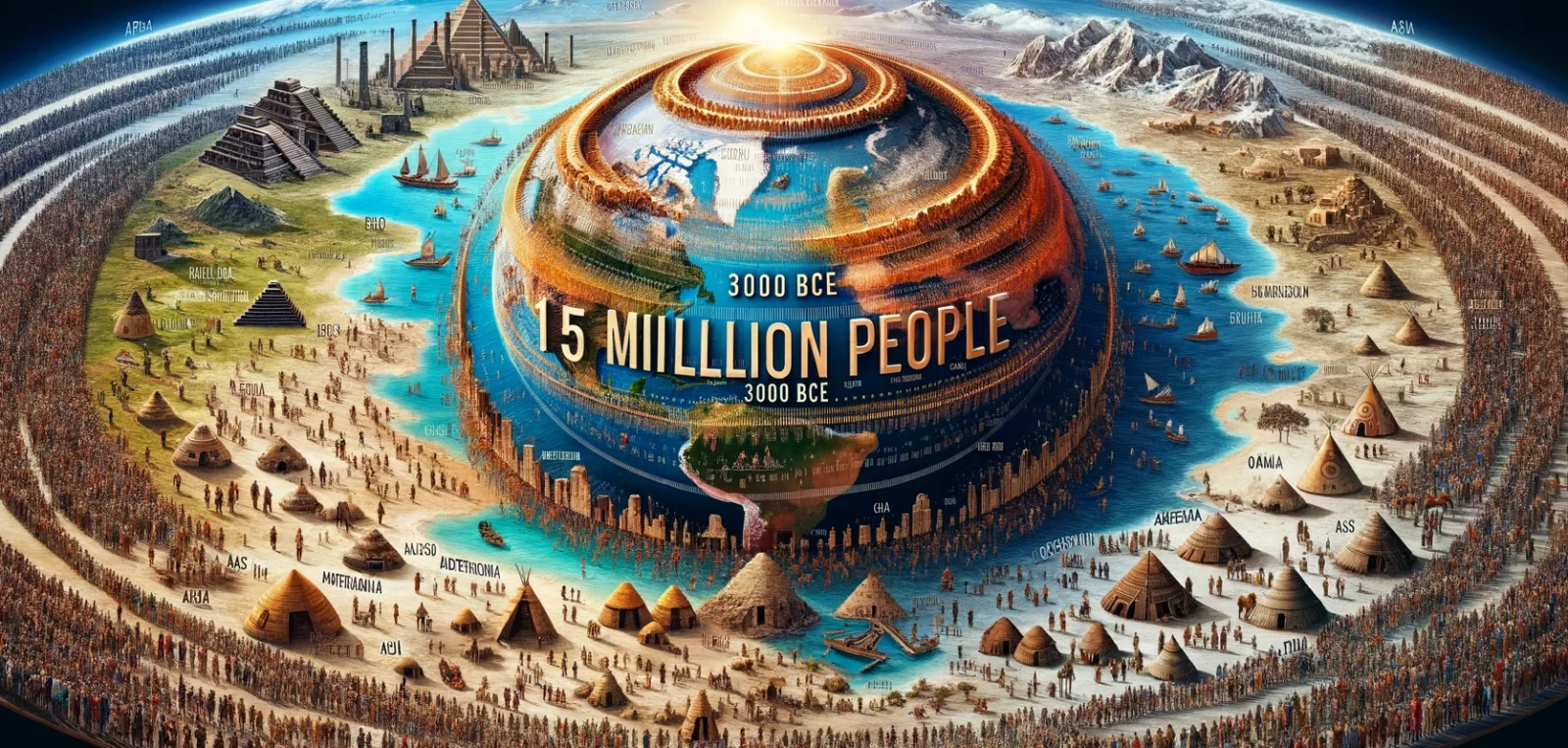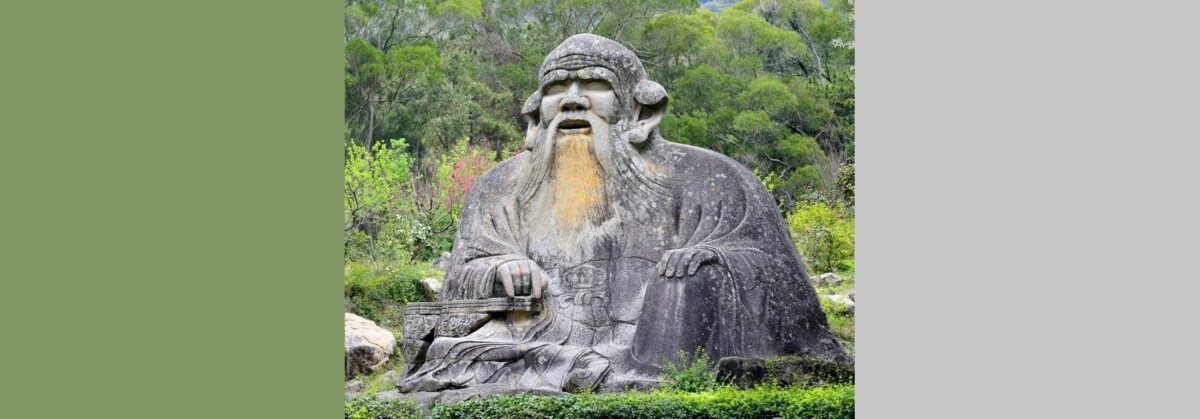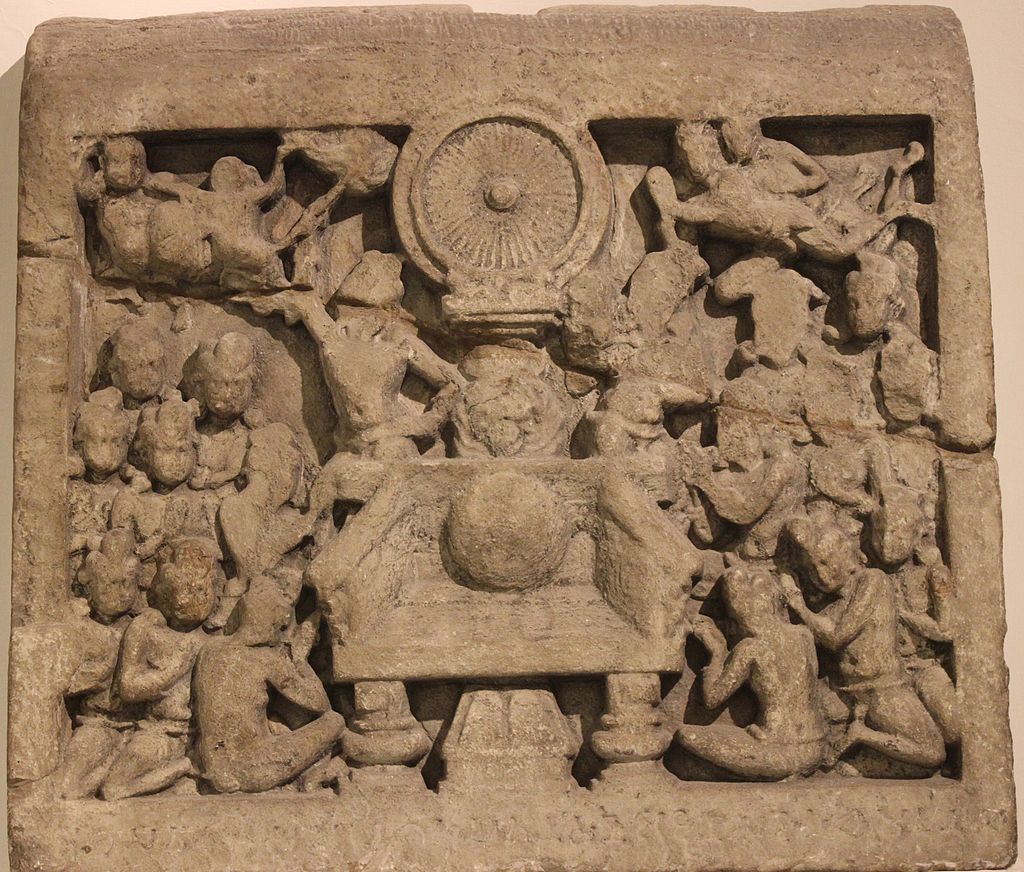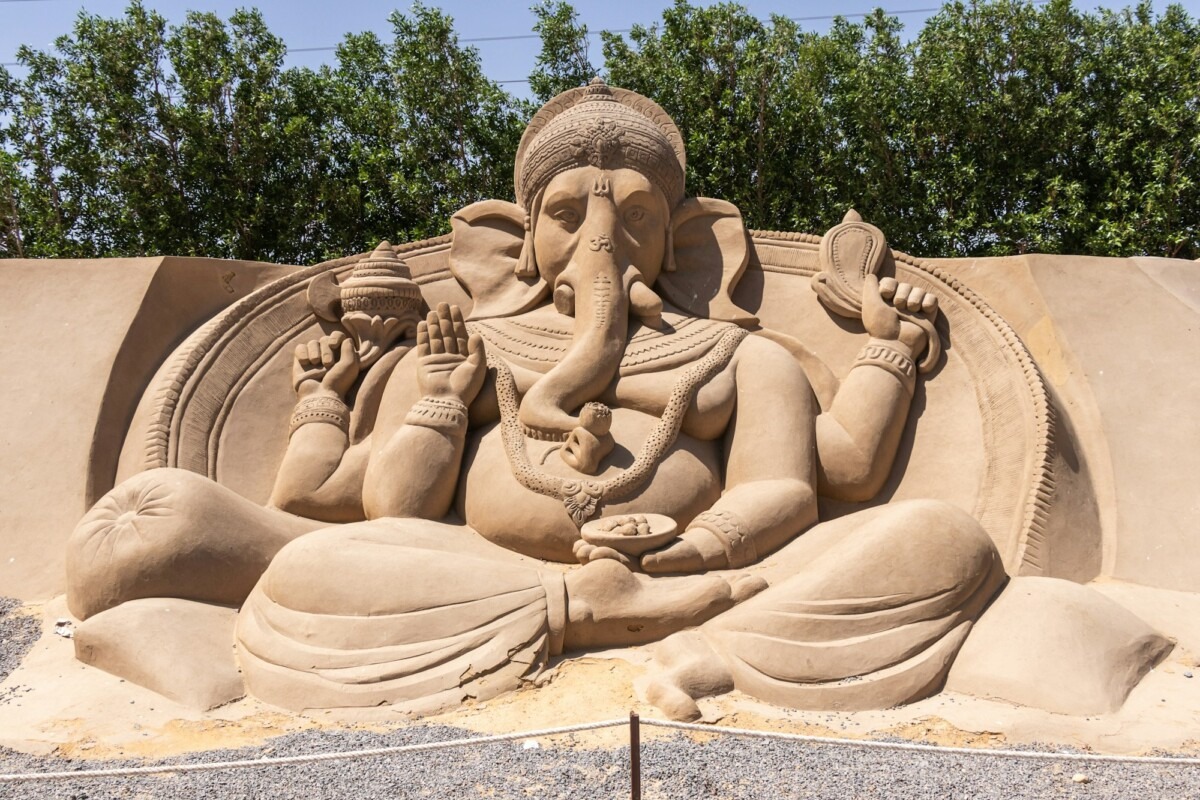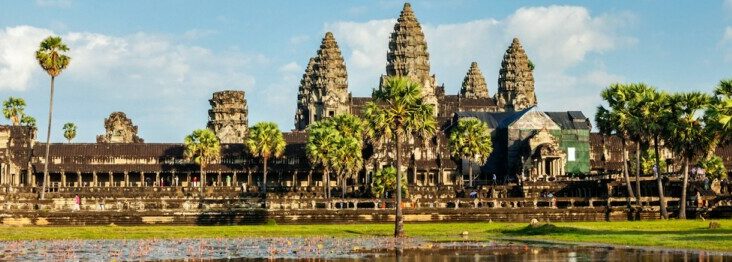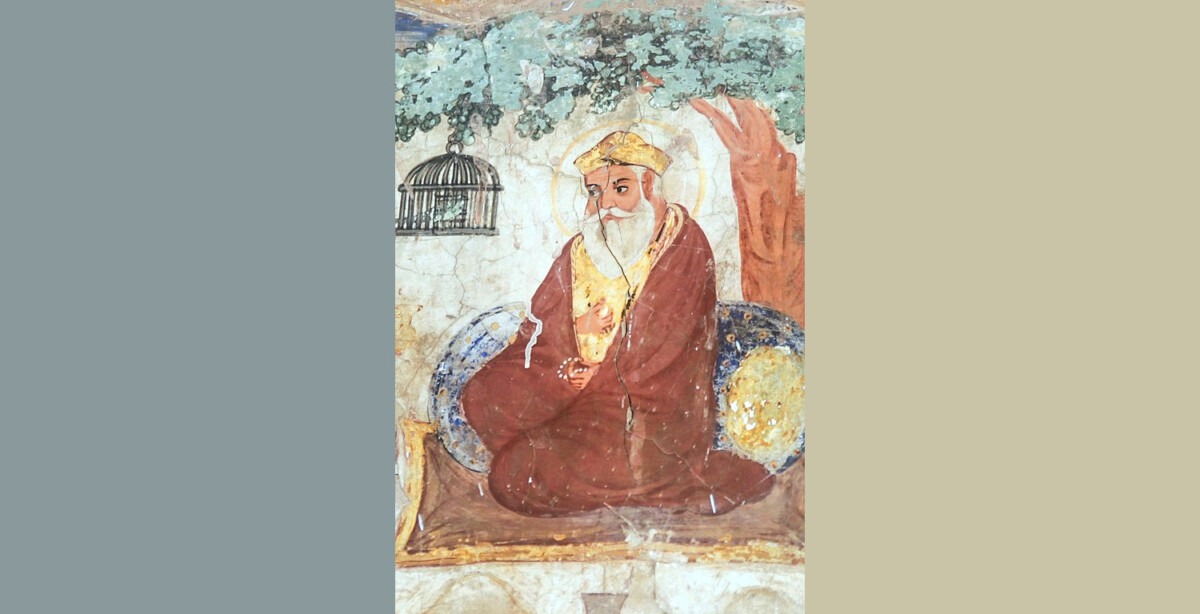Land TL: 1. Africa & Middle East | 2. The Americas | 3. Asia | 4. Europe-Mediterranean | 5. Oceana-Australasia
History by historical land mass is yet another wonderful lens into knowledge. These insights are the backbone to Mike‘s articles and his longer effort books. A part of his lifelong commitment to study. While they are not complete, they are useful.
History of the Lands: Asia
Earliest known seasonal settlement in the Asian zone: Nestled in what is now the outskirts of Beijing, China, the Zhoukoudian site stands as a testament to some of the earliest forms of semi-permanent human settlement in Asia. The presence of a long-standing fire pit at the center of the site is a significant indicator of repeated use, perhaps up to tens of thousands of years. Around this fire pit, early humans crafted stone tools, an essential skill for their survival and an activity that likely drew groups together.
When Homo sapiens first emerged, their population in Africa was likely just a few hundred thousand, while the total hominin population, including other species like Neanderthals and Homo heidelbergensis, may have ranged from 1.1 to 2.1 million. During this period, Homo sapiens were primarily found in Africa, while other hominins occupied broader ranges across Eurasia, with Neanderthals and Denisovans adapting to their environments with sophisticated tool-use and social structures. The early hominin distribution and interaction remain unclear, and this narrative, while speculative, helps us imagine the ancient world, highlighting the need for caution in interpreting these ancient population dynamics. Check out A New Look at Ancient Hominin Numbers: A Speculative Journey for more information.
Homo heidelbergensis lived in Africa, Europe and Asia from 700,000 to 200,000 years ago. They coexisted with humans in Africa, Europe, and Asia from our emergence around 315,000 years ago until their extinction about 200,000 years ago.
Imagined Image: A Homo heidelbergensis campsite a few thousand years before they went extinct, set in a lush European forest. The scene includes several individuals in a communal setting, showcasing aspects of their life and environment.







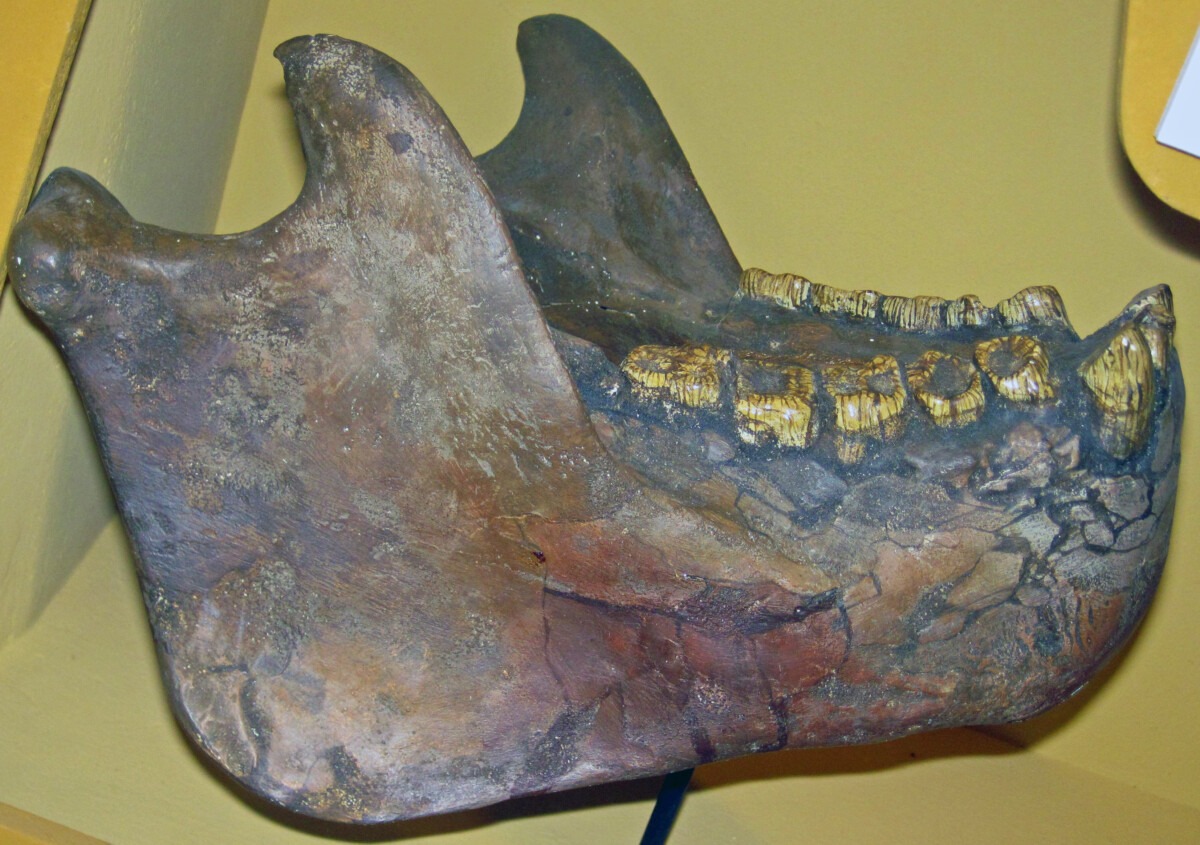
Gigantopithecus is believed to have gone extinct approximately 100,000 years ago. The primary evidence for their existence and extinction comes from fossilized teeth and jawbones found in caves in southern China, Vietnam, and India.
About King Kong: The legend of King Kong is a modern fiction rather than an ancient tale. The character of King Kong was created by American filmmaker Merian C. Cooper and first appeared in the 1933 film “King Kong.” The story was a product of contemporary imagination, inspired by adventure tales, the fascination with exotic locations, and early 20th-century interest in dinosaurs and other prehistoric creatures.
However, the idea of enormous ape-like creatures has roots in various cultures’ mythologies and folklore, which may have been inspired by the discovery of large ape fossils or by encounters with large animals. Gigantopithecus, which lived until about 100,000 years ago, was a real genus of giant apes, and it is possible that remnants or legends of such creatures could have influenced later myths.
Denisovan: This bracelet dates from 70,000 to 40,000 BCE. It was discovered inside the Denisova Cave beside ancient human remains. The Denisova Cave is a cave located in Siberia, Russia. Other cave finds include woolly mammoth and woolly rhino bones. Scientists say there is evidence that the bracelet’s maker used a drill. This is the earliest known example of advanced drilling in the world.
Head of the museum Irina Salnikova said: ‘The skills of its creator were perfect. Initially we thought that it was made by Neanderthals or modern humans, but it turned out that the master was Denisovan.” This has led to speculation that these earliest humans, Denisovans, were more technologically advanced than previously thought. If true, it might be that the Denisovans were more skilled than Homo sapiens and Neanderthals of the time.
Like Neanderthal DNA, Denisovan DNA exists in modern humans. Non-African East Asians and Europeans have about 2% Neanderthal DNA. Modern Melanesians derived about 5% of their DNA from Denisovans.
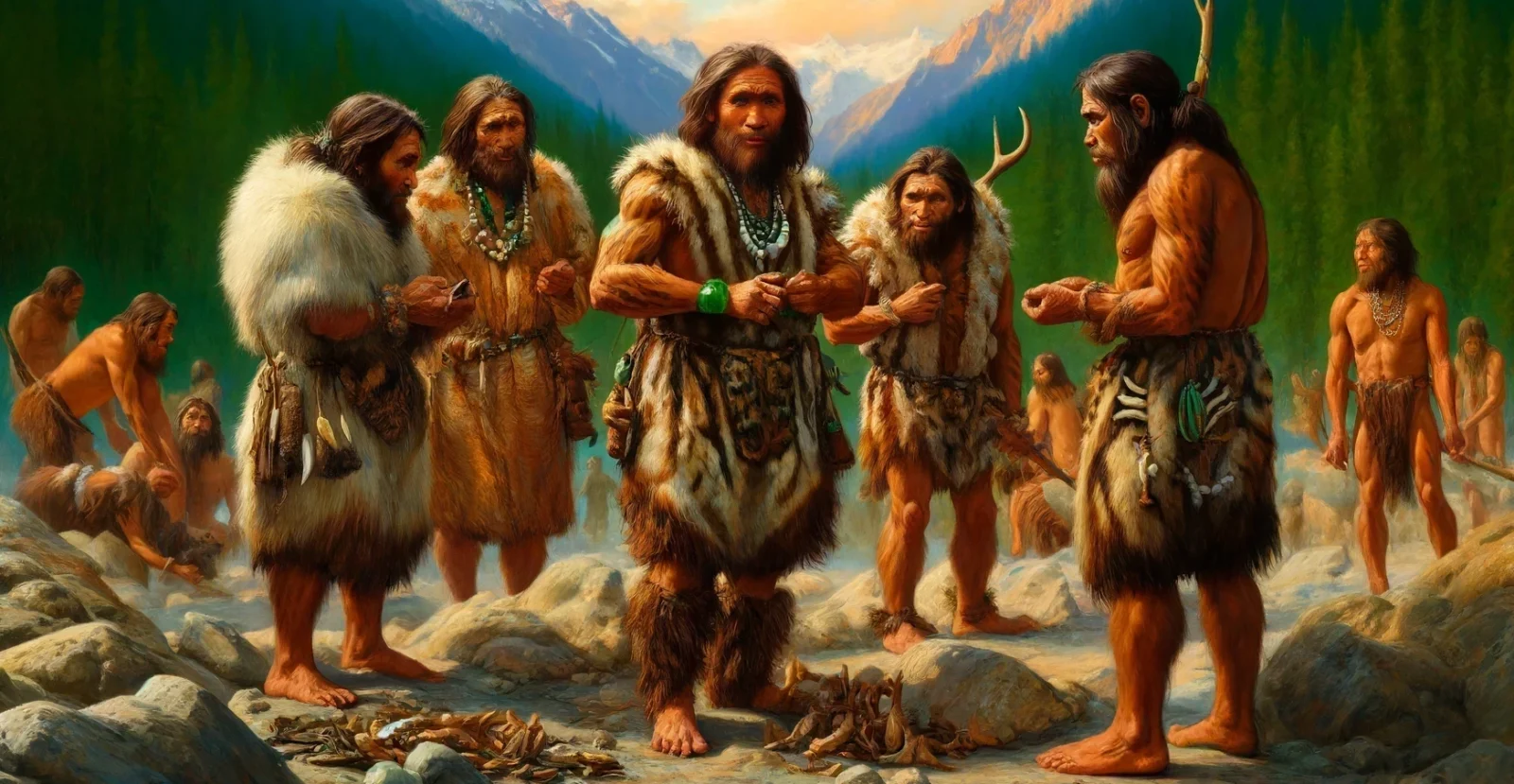
Discovered in 2019, Homo luzonensis inhabited the Luzon area north of Manila in the Philippines from at least about 67,000 to about 50,000 years ago. While current evidence suggests that Homo luzonensis may have become extinct before the documented arrival of Homo sapiens around 35,000 to 40,000 years ago, the exact timing of their extinction remains uncertain.
Lineage: Similar to Homo floresiensis, the luzonensis people are not likely descendants of Homo heidelbergensis. It is more plausible that they descended from an earlier ancient human, possibly from the Dmanisi population, an early Asian Homo erectus lineage, or potentially even directly from Homo habilis. However, any direct link to Homo habilis is speculative, but particularly interesting given the small brain size and stature of the luzonensis people.
Imagined Image: A small group of Homo luzonensis in a dense tropical forest on Luzon. This visualization emphasizes their survival strategies and interactions within their lush habitat.
Survival: From about 50,000 to 67,000 years ago (possibly earlier) in Luzon area, near Manilla, Philippines.
Size: 3′ 3″ to 3′ 7″ (same size or smaller than Homo floresiensis)
Brain Size: Estimated around 400 cm³ (about the same size as Homo floresiensis).
Brain to Body Encephalization Quotient (EQ): Ongoing research but likely about the same as Homo floresiensis, about 3.2.
Cognitive Revolution
50,000 BCE – 70,000 BCE. Population range: 500,000 to 2.5 million.
Given the uncertainties and lack of direct data, the following are speculative estimates.
- Africa-Middle East: 50-60% or 600,000 to 1 million people
Africa, being the origin of modern humans, likely had the highest population density at this time, particularly in Sub-Saharan regions which were more conducive to human habitation due to their climate and available resources. - Asia: 40% or 200,000 to 400,000 people
- Europe-Mediterranean: 10% or 50,000 to 100,000 people
- The Americas: 0.
- Oceana-Australasia: 1% or 10,000 to 15,000 people
The initial colonization of Australia around 50,000 BCE by modern humans involved small, isolated groups who managed to navigate sea crossings, leading to a very low initial population density. The rest of the remote islands of Oceania were among the last to be reached by humans.
A Shared Earth! Neanderthals-Hobbits-Flourensis
Around this time, Homo sapiens shared the Earth with other hominin species. Neanderthals were still widespread in Europe and parts of western Asia. In Asia, particularly on the islands of Indonesia, Homo floresiensis, often referred to as the “Hobbit” due to their diminutive stature, survived until about 50,000 years ago. Additionally, Denisovans, a less visually documented but genetically distinct group, also roamed Eurasia, leaving behind a genetic legacy that persists in modern humans, particularly among populations in Melanesia.
Homo erectus and humans last coexisted in Javanese in Asia around 50,000 years ago.
Imagined image above: A late-stage Homo erectus individual in Java, Indonesia, focused on crafting a tool from volcanic rock near a simple fire, set within the lush tropical rainforest. This visualization aims to capture the essence and appearance of Homo erectus during this late stage of their existence.

Discovered in 2003, Homo floresiensis (also known as the “Hobbit”) inhabited the island of Flores in Indonesia from 190 to 50 thousand years ago. Humans arrived about 50,000 years ago and may be the reason for their extinction.
Lineage: Most likely not a Homo heidelbergensis, but a descendant species from an earlier ancient human. Perhaps from the very successful Dmanisi people, an Asian Homo erectus lineage, or perhaps even directly from Homo habilis, which might be the original Earth roamer. The link to Homo habilis is speculative and based on the smaller brain size and stature of the floresiensis people.
Imagined Image: A small group of Homo floresiensis in their natural habitat on the island of Flores, engaging in daily activities around a communal fire and interacting with the local fauna. This scene captures their unique adaptations and social behaviors within a lush volcanic landscape.
Survival: From about 190,000 BCE to 50,000 BCE, primarily on the island of Flores, Indonesia.
Size: Approximately 3’6″ to 3’10″ (a bit shorter than the pygmy in Africa at 4’11”).
Brain Size: 380 to 420 cm³.
Brain to Body Encephalization Quotient (EQ): Research ongoing, but roughly 3.2 (habilis=3.3 to 3.8; humans=7.4 to 7.8).
Denisovans and humans coexisted in Siberia from about 194,000 to around 40,000 years ago. While their exact cause of extinction remains debated, competition with modern humans and climate change are thought to be contributing factors.
Imagined image: Set in Siberia around 45,000 years ago, a group of Denisovans is depicted in their winter camp, surrounded by a snow-laden forest. They are dressed in heavy fur clothing, complete with detailed, fur-lined boots, essential for the extreme cold. Their camp, featuring sturdy shelters made from wood and animal skins, centers around a warm, bustling fire, highlighting their advanced survival strategies and social cohesion in the harsh climate.
Homo neanderthalensis: Neanderthals and humans coexisted in Europe and Asia until around 40,000 years ago. While their exact cause of extinction remains debated, competition with modern humans and climate change are thought to be contributing factors.
Imagined image: Left is a neanderthal, right a human. Just as human looks vary widely, Neanderthals did too. This is perhaps one way neanderthals might have looked. The likely looked a bit more human than this too, but this gives you a good idea of the differences.
Humans used bone and ivory needles like these about 28,000 BCE to sew warm, closely fitted garments. These bone needles are from Xiaogushan, Liaoning Province, China, and are dated to about 28,000 to 21,000 BCE.
Eastern Asia and Europe: The domestication of dogs marks one of the most remarkable and earliest examples of animal domestication by humans. This significant event occurred approximately 20,000 years ago, with some studies suggesting an even earlier date. The process began when wolves, drawn by the waste and remnants of hunting left by human groups, started to linger around the fringes of hunter-gatherer camps. Over time, a mutual relationship developed: these ancestral wolves provided humans with alertness to dangers and help in hunting, while humans provided a steady food source.
The transformation from wild wolves to domesticated dogs likely took place in several regions independently, but genetic evidence points to significant early domestication events occurring in Eastern Asia and Europe. Through a natural and then increasingly intentional process of selection, humans favored wolves that exhibited traits beneficial to their lifestyle—traits like reduced fear and aggression, which made them better companions and guards. This led to genetic divergence from their wild counterparts, morphing wolves into various forms and breeds of dogs as we recognize them today.
These early dogs were not just pets but integral to human societies, assisting in hunting, guarding territories, and providing companionship. Their roles expanded as human societies grew more complex, with dogs adapting to various climates and cultural expectations. The domestication of dogs not only highlights the adaptability and intelligence of these animals but also underscores the deep, symbiotic relationship that developed between two distinct species, setting the stage for the later domestication of other animals and the rise of agrarian societies.
Late Stone Age
Mesolithic Period: 10,000 BCE – 6000 BCE.
- Africa-Middle East: 30% or 1.2 million peopleg
- Asia: 40% or 1.6 million people
- Europe-Mediterranean: 15% or 600 thousand people
- The Americas: 10% or 400 thousand people
- Oceana-Australasia: 5% or 200 thousand people
In the lush, fertile lands of the Yangtze River Valley in ancient China, early inhabitants achieved a milestone that would revolutionize human society: the domestication of rice. Around 8,000 BCE, these innovative communities began to cultivate wild rice, laying the groundwork for sedentary agriculture and complex civilizations. This agricultural breakthrough not only provided a stable food source but also spurred social and technological advancements, leading to the rise of sophisticated cultures and the eventual emergence of the Chinese civilization, one of the world’s oldest continuous cultures.
Possible lost city off Japan: Discovered in 1985 off the coast of Yonaguni, Japan, it has captivated archaeologists, geologists, and conspiracy theorists alike. Characterized by its monolithic, terraced structures, this submerged rock formation resembles architectural craftsmanship that some suggest could date back to around 8000 BCE, a time when global sea levels were significantly lower. This date remains highly speculative, as definitive scientific consensus on the monument’s origins—natural or man-made—has yet to be established.
The debate hinges on the monument’s peculiar features, such as precise angles and straight edges that evoke images of human-made pyramids and temples. Proponents of the man-made theory argue that these features are too structured to be products of natural geological processes and suggest a lost civilization’s handiwork.
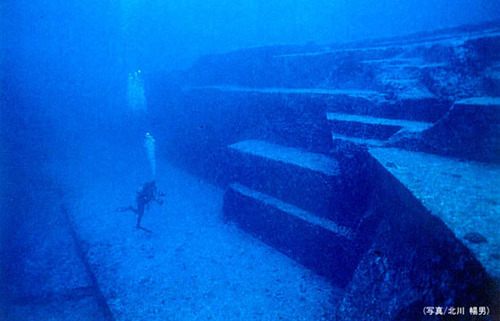
If Fuxi existed as one person, that person likely lived sometime between 8000 and 7000 BCE. Fuxi is a legendary figure in Chinese mythology, considered one of the Three Sovereigns. He is credited with creating humanity, inventing writing, and teaching people to fish and hunt. Fuxi’s contributions laid the foundation for early Chinese civilization and culture, embedding the importance of knowledge, survival skills, and societal organization in Chinese thought.
If Nüwa existed as one person, that person likely lived sometime between 8000 and 7000 BCE. Nüwa is a mother goddess in Chinese mythology, often associated with Fuxi. She is credited with creating mankind and repairing the pillar of heaven, symbolizing the restoration of order in the universe. Nüwa’s story highlights themes of creation, nurturing, and the balance between chaos and order, which are integral to early Chinese cosmology and philosophy.
Potential earliest writing in Asian zone: the Oracle Bone Script, circa 1250 BCE is oldest confirmed.
These symbols which are radiocarbon dated to the 7th millennium BCE have similarities to the late 2nd millennium BCE oracle bone script. Put this writing in the MAYBE column. Scientists are still going through a process to verify this claim. If we can discover some intermediate links, yes, more missing links, we can firm up these symbols as early writing. They were discovered in 2003 on tortoise shells found in 24 Neolithic graves excavated in Jiahu, Henan province, northern China.
Earliest known agrarian society in the Asia zone: Located in Henan, China, Jiahu is one of the earliest sites showing comprehensive signs of early agriculture, including rice cultivation. The community also showed advanced practices like winemaking, music, and possibly writing, indicating a highly developed early agrarian society.
Imagined image: This panoramic image presents the Jiahu Settlement around 7000 BCE, capturing a vibrant Neolithic village in Henan, China. It features typical mud and wood homes with thatched roofs, nestled in a lush landscape where inhabitants are engaged in the early cultivation of rice, illustrating the dawn of agriculture in ancient China.
The Jiahu gudi is the oldest known musical instrument from China. This 8,000 year old flute dates back to circa 6,000 BCE. Gudi literally means “bone flute”.
Stone Copper Age
Chalcolithic Period: 3,000 BCE – 500 BCE.
- Africa-Middle East: 36% or 5 million people
Early civilizations include Egypt and Mesopotamia with a relatively higher population density. - Asia: 36% or 5 million people
Early civilizations include Indus Valley and ancient China. They saw early urban development and agriculture which supported larger populations. - Europe-Mediterranean: 14% or 2 million people
Smaller due to the varied climatic conditions and the later development of agriculture compared to the Middle East. - The Americas: 7% or 1 million people
More sparsely populated with many diverse hunter-gatherer communities and early agricultural societies, particularly in regions like Mesoamerica. - Oceana-Australasia: 7% or 1 million people
These regions were among the least densely populated, with scattered tribal groups primarily leading hunter-gatherer lifestyles.
If Shennong existed as one person, that person likely lived sometime around 2800 BCE. Shennong, also known as the Divine Farmer, is another of the Three Sovereigns. He is said to have taught the Chinese people agriculture and herbal medicine. Shennong’s contributions emphasize the relationship between humans and nature, the importance of agriculture for societal stability, and the development of early medical knowledge. His legacy underscores the value of practical knowledge and its role in the well-being of society.
The Yellow Emperor, or Huangdi, is a legendary figure in Chinese history, traditionally credited with foundational contributions to Chinese civilization. He is associated with the development of the concept of Yin and Yang, the dualistic nature of reality, and balance, which profoundly influenced Chinese philosophy, medicine, and cosmology. Attributed to his era are the Huangdi Neijing (Yellow Emperor’s Inner Canon), an ancient text exploring these principles, as well as innovations in the Chinese calendar, writing, and agriculture. Though his historical existence is debated, his impact on Chinese thought and culture is enduring.
Earliest undeciphered writing in the Asian zone.
The Indus Valley script, emerging around 2600 BCE in one of the world’s earliest urban civilizations, remains one of archaeology’s greatest puzzles. Found across a vast expanse from today’s northeast Afghanistan to Pakistan and northwest India, this script comprises over 400 unique symbols, ranging from geometric shapes to plant-like and animal motifs. Inscribed on a variety of objects including seals, pottery, and metal tools, these markings suggest a sophisticated system of communication used for trade, administration, or ritual purposes.
The Rigveda, Sanskrit for “praise knowledge”, is a collection of sacred texts of Hinduism first written down between 1700 and 1100 BCE. The sounds and texts of Rigveda have been orally transmitted since at least circa 2000 BCE. It discusses cosmology, praises deities, and covers philosophical questions including…
- 1.164.34: “What is the ultimate limit of the earth?”, “What is the center of the universe?”, “What is the semen of the cosmic horse?”, “What is the ultimate source of human speech?”;
- 1.164.34: “Who gave blood, soul, spirit to the earth?”, “How could the unstructured universe give origin to this structured world?”;
- 1.164.5: “Where does the sun hide in the night?”, “Where do gods live?”;
- 1.164.6: “What, where is the unborn support for the born universe?”;
- 1.164.20 is a parable of the Body and the Soul.
The other three books of the Veda were written centuries later:
- Yajurveda, circa 1000 BCE
- Samaveda, circa 1000 BCE
- Atharvaveda, circa 700 BCE
Fossil discoveries have brought wonder to humanity from the very beginning. The discovery of fossils from prehistoric animals like sauropods and mammoths inspired ancient people to create stories about massive, powerful creatures. Dragon-like and other creatures appear in myths across the world from our earliest writings.
For example, in China, the discovery of fossils from giant prehistoric animals like mammoths and sauropods dates back to the Shang Dynasty (around 1600-1046 BCE). These finds likely influenced the development of dragon legends, which were present in Chinese culture by the Zhou Dynasty (1046-256 BCE). As early as the 4th century BCE, Chinese scholars documented the discovery of “dragon bones.” These bones, often large and unexplained, were likely dinosaur fossils. The Chinese ground them into powder for use in traditional medicine, believing them to possess healing properties.
Greco-Roman authors, such as Herodotus and Pliny the Elder, mentioned large bones being discovered and attributed them to mythical creatures or ancient giants. While early thinkers like Xenophanes of Colophon recognized some fossils as remnants of once-living creatures as early as 600 BCE, it wouldn’t be until the 1600s that humanity would start to accept this empirical evidence as once living creatures.
Earliest deciphered writing in Asian zone: Indus Valley writing, undeciphered, predates this to circa 2600 BCE.
The earliest known writing system in Asia is typically considered to be the Oracle Bone Script from ancient China. This script was used during the Shang Dynasty around 1200 BCE, but evidence suggests it may have developed as early as 1250 BCE or earlier. Oracle Bone Script was primarily used for divination purposes and was carved on animal bones or turtle shells. These artifacts, known as oracle bones, were used to communicate with ancestors and gods to ask about weather, crop planting, the fortune of the kingdom, and other issues of state and religious importance. The script is a direct precursor to modern Chinese characters, making it not only one of the oldest forms of writing in Asia but also a foundational element of one of the world’s continuously used writing systems.
Hinduism, one of the world’s oldest religions, emerged around 1100 BCE, several centuries after the Indus Valley Civilization collapsed. Hinduism has no known roots in the IVC, but it’s a topic to follow as we uncover clues. There was a several century gap from the collapse of the IVC to the rise of the early Vedic tradition, which might have adopted or been influenced by some imagery and cultural elements from the previous civilization in the area, but the writing skills were lost. Early Vedic tradition was based on oral traditions that predate the earliest known Vedic writings, which date back to around 550 BCE. The religion does not have a single founder and is a synthesis of various traditions. Today, Hinduism is centered around the Vedas, ancient sacred texts. As with all religions, it evolved through various phases, including the early Vedic period (circa 900-500 BCE) and was solidified to today’s Hinduism much later.
Creation date: 155 Trillion Years ago.
Hindu cosmology presents a cyclic model of the universe that undergoes periodic creation and destruction. Texts like the Puranas describe cycles of creation that span billions of years. According to some interpretations of Hindu scriptures, the current universe is about 155.52 trillion years old, and we are in the 51st year of the present Brahma, making it roughly 155.52 trillion years since the creation of the cosmos.
Some of my favorite Hindu sayings:
- Every day you should sit quietly and affirm, with deep conviction.
- You become that which you believe you can become.
- The entire universe is to be looked upon as the Lord.
30 Phil, Chapter 3: Gargi and the Concept of Holism
Gargi lived in India around 800 BCE, give or take a century, but we do not know her lifespan. We know about her from early Vedic Tradition, specifically from the early Vedas. Gargi is one of the earliest known female philosophers. Although the specifics of her timeline are unclear, she emerged around 800 BCE. Gargi’s life unfolded in the kingdom of Videha, present-day Bihar in eastern India. Her family belonged to the Brahmin caste, who have historically been the custodians of knowledge in Indian society. In this capacity, they played a vital role in the cultural transmission of knowledge.
30 Phil, Chapter 4: Laozi and Daoist Philosophy
The life of Laozi is shrouded in mystery, but he is the first philosopher in “30 Philosophers” that attempts to construct a precise biography. The Spring and Autumn Period of China spanned nearly three centuries starting in 770 BCE, and Laozi lived about in the middle of that era. He was born about 604 BCE . His native language was Old Chinese, he authored the Dao De Jing, and founded the Daoist philosophy. Some stories indicate he was married and had at least one son.
Pictured is the statue of Laozi at the base of mount Qingyuan in China.
30 Phil, Chapter 5: Confucius and Confucianism
Confucius is remembered for his practical applied philosophy. His sayings are a reflection of many centuries of common sense sayings making his philosophy deeply Chinese.
My favorite sayings:
- The man who knows he can, and the man who knows he cannot, are both correct.
- Real knowledge is to know the extent of one’s ignorance.
- The man who asks a question is a fool for a minute, the man who does not ask is a fool for life.
- You are what you think.
- All people are the same; only their habits differ.
- Roads were made for journeys, not destinations.
-
Respect yourself, and others will respect you.
30 Phil, Chapter 6: Gautama Buddha and Buddhism
In a much simpler time, the royal family of the Shakya dynasty lived in a palace located at the capital of the Shakya kingdom in present-day Nepal. Around 563 BCE, a boy named Siddhartha Gautama was born in the palace. At the age of 29, he left the luxury of his palace, and became one of the many wandering ascetics. After six years of wandering, in a flash, he suddenly attained enlightenment at the age of 35 under a Bodhi tree. Over the centuries, Buddhist Councils reorganized and revised the Canon, eventually adding the third text containing philosophical and psychological analysis. The degree to which these revisions deviated from the Buddha’s original words remains unknown. It was not until the 1st century BCE that the orally transmitted Pali Canon was finally committed to writing.
Pictured: Gautama Buddha statue in Buddha Park of Ravangla, Sikkim. Showing after Confucius just to group Laozi & Confucius together.
Chuang Tzu, or in modern pinyin, “Zhuangzi,” is a cornerstone of Daoist philosophy. His collection of essays and stories delves into themes of spontaneity, relativity, and the natural order. The famous Butterfly Dream, which questions the boundaries between dreaming and waking states, epitomizes his exploration of transformation and reality.
Chuang Tzu championed the principle of “wu wei” (effortless action), advocating for living in harmony with the natural world and one’s true nature. His writings highlight the limitations of human knowledge and the relativity of perceptions, encouraging a flexible and open-minded approach to understanding life.
His influence extends far beyond his era, impacting both Eastern and Western thought. By emphasizing naturalness, simplicity, and non-conformity, Chuang Tzu inspires countless generations of thinkers and spiritual seekers. His teachings remain relevant, urging us to embrace change, question our assumptions, and find harmony in the flow of life.
In 322 BCE, following the disruption left in the wake of Alexander the Great’s incursions into the Indian subcontinent, Chandragupta Maurya founded the Maurya Empire. This marked the beginning of one of India’s largest and most powerful empires, stretching at its zenith from the Himalayas to the Deccan Plateau. The reign of Chandragupta and his successors, most notably Ashoka the Great, was characterized by significant advancements in political organization, economic development, and the spread of Buddhism both within the empire and beyond its borders. The Maurya Empire’s legacy of unification, administration, and cultural proliferation left an indelible mark on the history of South Asia.
This supernova was observed by Chinese astronomers in 185 CE. The Chinese kept meticulous astronomical records for centuries, including observations of what modern scientists interpret as supernovae. Chinese astronomical records from 185 AD describe the appearance of a “guest star” in the constellation now known as Circinus. This guest star matches the expected location and timing for a supernova that would leave behind RCW 86.
30 Phil, Chapter 14: Badarayana and Karma
Badarayana is the sage who wrote the Brahma Sutras. Badarayana is placed at circa 200 CE, but the truth is, we don’t know when he lived. In my research, I found dates ranging from the 4th century BCE to the 4th century CE . While scholarly consensus leans towards an earlier date, I chose a reference year of 200 CE so I could group the Greco-Roman philosophers together on our mostly chronological journey.
Badarayana composed the “Brahma Sutras” as a guide to the Upanishads, a foundational text in Vedanta philosophy. The text was written in Classical Sanskrit and in an aphoristic style: short sentences expressing an idea. This style, popular between 500 BCE and 500 CE , gives me a modicum of comfort with the 200 CE date I’ve chosen.
Unfortunately, little is known about Badarayana’s personal life and background.
In the early 12th century, the Khmer Empire, located in what is today Cambodia, undertook one of the most ambitious architectural projects in the history of Southeast Asia: the construction of Angkor Wat. Originally dedicated to the Hindu god Vishnu, this temple complex reflects the height of Khmer architectural, artistic, and spiritual achievement. Angkor Wat is distinguished not only by its vast scale and ornate design but also by its significance as a symbol of Cambodian national pride and identity. Its transition from a Hindu to a Buddhist temple mirrors the wider religious and cultural shifts in the region over the centuries. Today, Angkor Wat stands as a testament to the ingenuity and devotion of the Khmer people, attracting scholars and tourists from around the globe.
30 Phil, Chapter 19: Guru Nanak and Sikhism
Nanak was born in a village in Pakistan, on April 15, 1469. In 1499, at age 30, Nanak experienced a transformative spiritual event. While working as a storekeeper, he would often bathe in a nearby river. One fateful day, he submerged and remained missing for three days. Upon his unexpected re-emergence, Guru Nanak was born.
Next >>
Land TL: 1. Africa & Middle East | 2. The Americas | 3. Asia | 4. Europe-Mediterranean | 5. Oceana-Australasia



